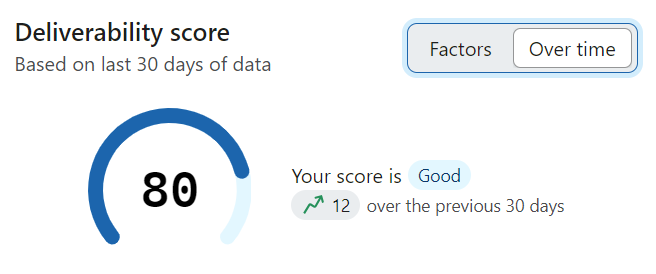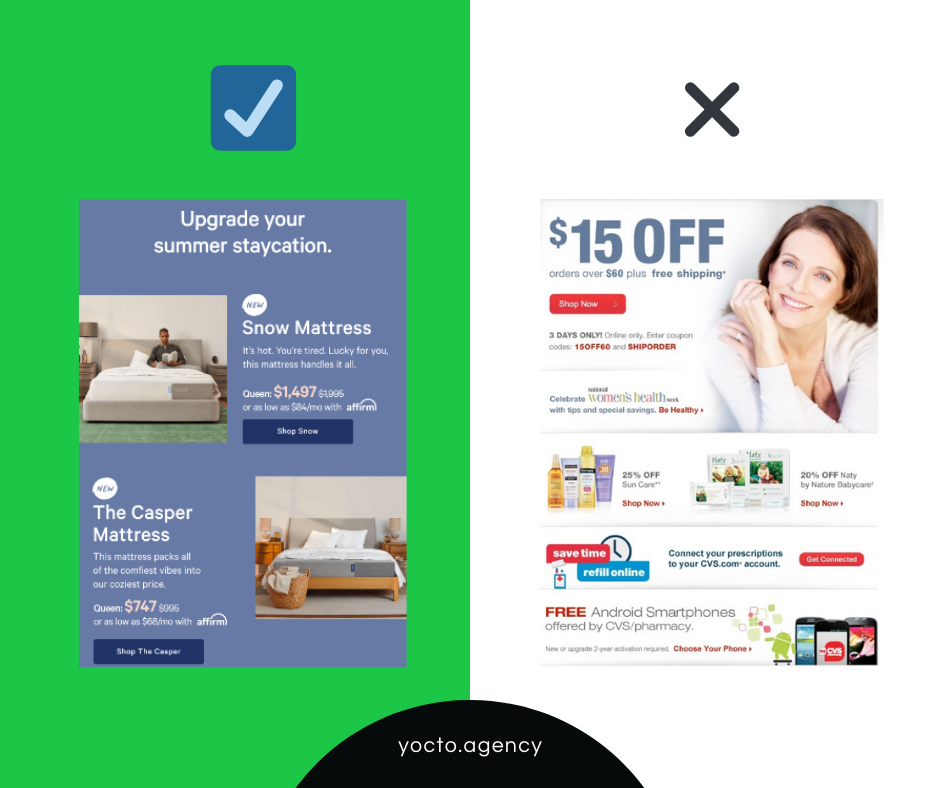Klaviyo users already know the power of email marketing. But are your emails truly reaching their full potential… Or is your hard work being ruined by bad email deliverability? In the competitive e-commerce world, making sure your messages land in the inbox, not the Bermuda triangle spam folder, is kind of a big deal.
This guide will dive into the nitty-gritty bits of email deliverability within Klaviyo. We’ll check out the (many) things that can influence your deliverability rate, give you an easy step-by-step audit process, and explain how you can use Klaviyo’s features and some useful third-party tools to optimize your campaigns.
Email deliverability is the technical term for how many of your emails land up in your reader’s inbox instead of their spam folder. It’s measured in a percentage; for example, an email deliverability score of 80 means 80% of your emails find the inbox.
When emails land in the inbox rather than the spam folder, they’re much more likely to be seen, read, and acted upon. If someone’s missed your limited time sale because the promo went to spam, well… You’ve lost a customer that could well have bought from you if they’d only seen your message in time.
Things like your sender reputation, email content, recipient engagement, and how well you stick to email marketing best practices can all affect your email deliverability.
Email deliverability directly affects the success of your marketing campaigns. Poor deliverability means your messages may end up in spam, and if your readers can’t see them, they can’t act on them. Basically, you’re sending messages into a void.
When your audience doesn’t see, open, or interact with your emails, it can harm your sender reputation, which tells email service providers that your emails are junk. This is a dangerous place to be when your business relies on those emails getting opened.
High deliverability rates give you the best chance of your emails being seen by your audience. Higher open rates and more clicks ultimately lead to more conversions. As we’ve already mentioned, a promotional email about a sale will see way better results if the email lands in the inbox rather than the spam folder (which most people don’t check often).
Keeping up a good deliverability score helps build trust with your customers. If your emails consistently pop up in their inbox and provide value, they’re more likely to engage with your brand and remain loyal.
This is especially important for businesses that rely on repeat customers, like subscription services. It’s like keeping in touch with your friends—if your mobile service provider is blocking your messages, your friends aren’t going to place much stock in your friendship. Same thing with your emails.
Effective email deliverability supports your big-picture marketing goals. It doesn’t matter what your goal is—to increase sales, boost website traffic, or improve customer retention,—making sure those emails reach the inbox is key.
Imagine this: an ecommerce company sends onboarding emails to new customers about getting started with their product. If it lands up in the spam folder, their new clients will be unimpressed at the lack of guidance (not realizing it’s basically in their trash can).
But land it in their inbox, and they’ll start off on a good footing with your product and be more inclined to take an upsell because they know they’ll get good service.
Poor deliverability can do some damage to your sender reputation. Internet service providers spy on sender behavior, and if they spot high bounce rates or spam complaints, it can cause them to assume you’re just spammy… So they’ll put you in the spam folder where (they think) you belong.
Regularly cleaning your email list and following best practices can help you keep up a good reputation and boost your deliverability.
A good email deliverability score in Klaviyo is between 75 and 89. This means that between 75 and 89 out of every 100 emails you send reach the reader’s inbox. An excellent email deliverability score is 90% or higher.
If you’re hitting this rate, it’s a good sign that your email marketing practices are working and that your messages are getting through to your audience.

An email deliverability score lower than 95% may be a sign that you need to look a bit deeper into your email list quality, sender reputation, or the content you’re sending. Find and fix any issues, and you’ll be on the way to improving your overall email marketing performance.
Keeping that number high does mean you’ll need to monitor and optimize your email marketing practices often. Spring clean your lists and segments, give your content a once-over, and double-check that your sending times align with best practices.
Knowing what’s behind email deliverability helps you understand what to monitor and what changes to make to improve your chances of landing in the inbox.
Sender reputation is the score that email service providers (ESPs) assign to your email domain and IP address. It’s influenced by things like the number of emails sent, number of bounces, and number of spam complaints. The higher your reputation, the more likely your emails are to be delivered to the inbox.
Email authentication protocols are rules that domain name system (DNS) records follow for verifying that your emails are coming from a real, trustworthy source. Set these up early and properly, and it can make a huge difference to your email deliverability score.
Spam filters are email marketers’ least favorite things in the world. ESPs use these automated tools to detect and block unwanted emails. They analyze your subject lines, content, and sender information. If these filters flag something on one of your emails, they could send you right to spam.
Yes, the content and design of your emails can also affect deliverability. Emails that are well-designed, easy to read, and relevant to the reader are more likely to get to the inbox. Poor design, broken links, or irrelevant content can trigger spam filters and you know what happens then!
This is all about how people interact with your emails. High engagement rates, like opens, clicks, and replies, show ESPs that your emails are valuable and relevant. Low engagement rates make ESPs think nobody’s interested and they’ll dampen down your deliverability.
An email deliverability audit helps you find and fix issues that stop your emails from reaching your audience’s inbox. Regular audits help you uncover problems and figure out how to fix them so you can keep finding those inboxes!
You can’t fix something you don’t know is a problem! Auditing your account will show up all the things that might be making your deliverability worse. These often include:
Your reputation precedes you… So make sure it’s a good one. Fix the issues, and your sender reputation will tick up a few inbox-friendly notches.
Customers not super engaged? An audit might turn up some interesting data as to why. Try things like:
Here’s how to do a comprehensive email deliverability audit of your Klaviyo account.
Log into your Klaviyo account using your credentials.

Go to “Lists & Segments” in your Klaviyo dashboard.
Review your most recent campaigns and analyze them carefully. Bad content and unappealing design could be causing people to bounce sooner than they would otherwise.

Access Campaign Reports: Go to “Analytics” > “Metrics”.

Keeping on track with the industry best practices will help keep your emails in the inbox because they’re behaving just as ESPs expect them to. Nothing suspicious or weird.
Some regulations apply everywhere, and some apply in certain regions. Do your research beforehand so you know what you’re supposed to be complying with.
Klaviyo offers some handy tools to boost email deliverability. Using them smartly and they can help your emails reach the inbox and engage your audience.
Klaviyo provides valuable insights and tools. But don’t discount using third-party email deliverability test tools for different perspectives and ideas:
YOCTO’s Klaviyo audit services are designed to fine-tune your email marketing strategy. Our audits delve deep into your Klaviyo account, making sure every part of it is operating at its peak.
Our services include:
By partnering with YOCTO, a Klaviyo Master Platinum Partner, you place your email marketing strategy in the hands of seasoned professionals. Here’s what sets us apart:
We don’t do half a job. We’ll audit your account in detail and give you understandable feedback, as well as actions you can take to improve things.
Ready to elevate your email marketing? Book your discovery call today and let’s see how we can help you achieve superior email deliverability and an increased ROI.
Do you need
to maximize your
profits?
